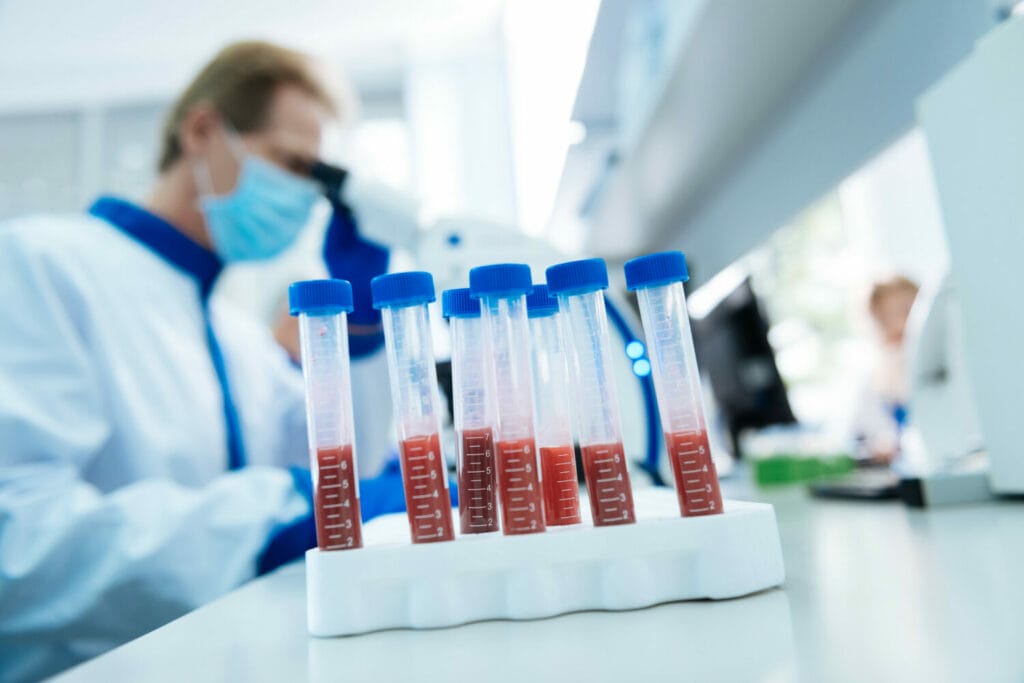Relocating a laboratory is no simple task. Between safeguarding sensitive equipment, managing valuable samples, and ensuring operations resume without disruption, it’s easy to see why lab moves rank as one of the most complex undertakings in both research and clinical environments.
Whether you’re expanding, consolidating, or upgrading facilities, proper planning and expert guidance are essential to ensure the success of a laboratory relocation.
At Cryosite, our expertise in biological storage and clinical trial logistics has shown us just how critical preparation and precision are during a lab move.
Let’s explore the key phases of planning, executing, and setting up a laboratory relocation to minimise risks and get back to groundbreaking research as swiftly as possible.
Planning Phase: Assessing Risks and Setting Timelines
Every lab is unique, and so is every lab move. The first step in a successful relocation is creating a robust plan tailored to your lab’s specific needs.
Undertake Comprehensive Risk Assessment
A lab’s relocation isn’t just about logistics; it’s about safeguarding delicate products, hazardous materials, and invaluable samples. Begin by conducting a detailed risk assessment to identify potential challenges and vulnerabilities.
Evaluate Critical Risks:
- Damage to fragile products during transport.
- Disruption of temperature-controlled environments.
- Potential delays in resuming operations.
Comply with Regulations:
Ensure your move adheres to all regulatory and compliance requirements, including handling hazardous materials and chain of custody protocols.
Establish a Realistic Timeline
Time is of the essence in any lab move. Strive to create a detailed, step-by-step timeline that begins weeks or months in advance, allowing ample time to account for unexpected delays.
Key considerations include:
- Scheduling the downtime for equipment validation and calibration.
- Coordinating with staff and external suppliers.
- Transport permits and safety certifications for hazardous or temperature-sensitive materials.
Remember that moving a lab is not just a logistical exercise. It’s a team effort that includes scientists, safety officers, compliance experts, and possibly an outsourced service provider like Cryosite.
Inventory Management: Safeguarding Samples and Supplies
Your inventory is the lifeblood of your lab. Tracking and protecting it during a move is critical to ensuring continuity in research.
Create a Detailed Inventory List
Before the move, create an exhaustive inventory of all materials, samples, and equipment. Categorise items based on their handling requirements, such as:
- Temperature-sensitive items that require frozen or liquid nitrogen storage.
- Fragile glassware or analytical instruments.
- Dangerous goods, such as chemicals or biohazards.
An organised inventory serves as your checklist during packing, transport, and reassembly.
Securely Pack and Store Samples
Secure packing is instrumental for safeguarding irreplaceable samples. Invest in high-quality packing materials and work with a team that understands the nuances of handling lab assets:
- Use liquid nitrogen dry shipper solutions with temperature monitors for cryogenic samples.
- Document chain of custody details to maintain regulatory compliance.
- Consider temporary storage in a biological facility, like Cryosite’s monitored storage solutions, if there’s a gap between moving out and moving in.
By proactively managing your inventory, you can reduce downtime and eliminate the risk of loss or damage.
Equipment Relocation: Transporting and Calibrating with Care
Lab equipment like microscopes, centrifuges, and analytical instruments is highly technical and often delicate. Safely transporting such assets requires expertise and attention to detail.
Decommission and Prepare Equipment
Before the move, decontaminate and decommission all equipment according to safety protocols. For larger, complex instruments, consult user manuals or manufacturers for specific transport instructions.
- Pack Intelligently: Use specialised packaging designed for sensitive equipment to prevent damage during transit.
- Label Clearly: Colour-code or label each box with specifics about its contents and destination within the new facility.
Use Specialised Transport Services
Specialised laboratory transport companies are your safest bet for moving heavy, fragile, or temperature-sensitive equipment. They ensure:
- Temperature-controlled vehicles for equipment and samples.
- Shock-absorbing crating systems to minimise vibrations during transit.
Calibrate and Validate Upon Arrival
Once the equipment arrives, it’s time to get everything up and running. Calibrate all instruments and verify their accuracy before resuming operations. For smooth implementation, it’s worth partnering with teams experienced in compliance, like Cryosite, to manage the process seamlessly.
Post-Move Setup: Validate and Resume Operations
Arriving at your new space is just the beginning. The post-move phase is critical to restoring normal lab operations and maintaining compliance standards.
Validate the New Lab Environment
Before resuming work, conduct a thorough check to ensure the new laboratory meets all necessary requirements:
- Environmental Stability: Verify temperature, humidity, and airflow settings.
- Compliance Checks: Ensure the new lab aligns with health, safety, and regulatory guidelines.
- Instrumentation Tests: Perform diagnostic tests on equipment to confirm functionality.
Resume Research Without Delays
Strategically plan the resumption of operations to minimise disruptions. Ensure that all team members are trained in the new setup, and that any issues flagged during the validation process are resolved before beginning full-scale research or production.
The meticulous setup of your new lab environment can greatly reduce the risk of subsequent disruptions and ensure operations run efficiently from day one.
Set Your Lab Move Up for Success
Relocating a laboratory is no small feat. It requires strategic planning, meticulous inventory management, secure transportation, and precision in setting up your new environment. When done correctly, a successful lab move ensures minimal downtime, compliance with regulations, and the protection of your invaluable assets.
At Cryosite, we specialise in biological storage, temperature-controlled logistics, and chain of custody services. With over two decades of experience, our team is uniquely qualified to assist with every stage of a laboratory move. Whether it’s temporary storage of temperature-sensitive materials or providing speciality shippers and transport, we deliver reliable and compliant solutions so you can focus on your work.
If you’re planning a laboratory relocation, get in touch with our team today. Together, we’ll ensure your move happens smoothly and efficiently, letting you focus on innovations that make an impact.


